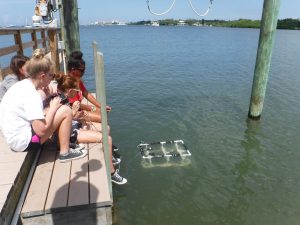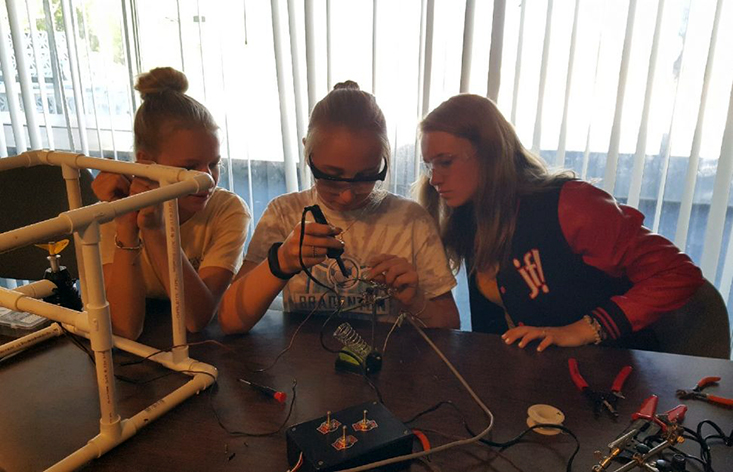This blog was contributed by Mr. Paul Aunspaugh, OCG Co-Director, former educator, retired Air Force officer, and ROV lab mentor. Edits by OCG Fellow, Kate Dubickas.
Lab: ROVs
Lab Mentor: Paul Aunspaugh
We walked from our education building, The Clam, out onto the wooden dock that sits behind it. When in Florida, this sort of setting isn’t unfamiliar. Piers and docks dot the memories for many of those along the Florida coastline, especially for many of our Pinellas County campers. While the birds plunging towards the water’s surface or the soft creaking of planks underneath our feet may be familiar, what’s living underneath the dock is much lesser known for most. I posed a question, “What is living around the pilings holding up the dock?” A common retort: “I would like to know but don’t want to get wet.” The resolution: a remotely operated vehicle.

Remotely Operated Vehicles, or ROVs, are an underwater robot controlled for movement by a person who remains comfortably dry, controlling its mobility nearby. They are a feat of engineering, for purposes to be marveled by, and during our ROV Lab, the girls learned how ROVs are used to explore and work in oceans and lakes. As part of our lab, four to six campers were split into groups of two, and each group built an ROV themselves. Using materials including ½ inch PVC piping, PVC connectors, sump motors with attached propellers, control box with a wire umbilical cable, and underwater camera, the girls began with design. They collaborated on how design would serve function, and what functions would be necessary depending on the marine environment. They pieced and soldered parts together, testing their designs for effectiveness. Each of the two ROVs was deployed off the dock into the water for preliminary testing. After slight adjustments were made for buoyancy, the second deployment was an engineering success. The girls took turns operating their vehicles using the hand-held ‘remote’, observing by way of the camera details of the biology attached to and swimming past the pilings as they moved their vehicles across the seafloor.
Practicing design collaboration, communication, and some hands-on engineering skills, the ROV Lab campers got to spend a day in the life of an ocean engineer. And next time they find themselves near a pier or walking down a dock, hopefully they remember, or even share, exactly how the habitat they’re walking just above looked down below, all while staying dry.
